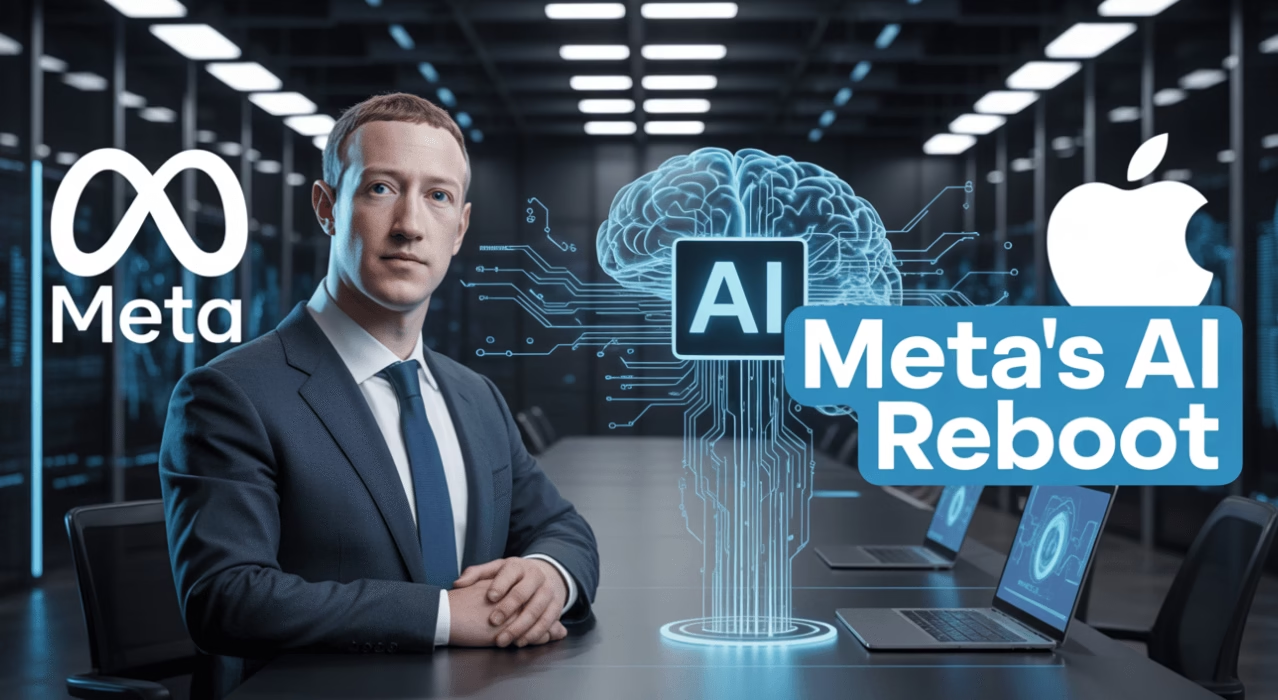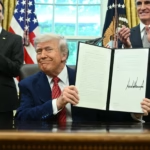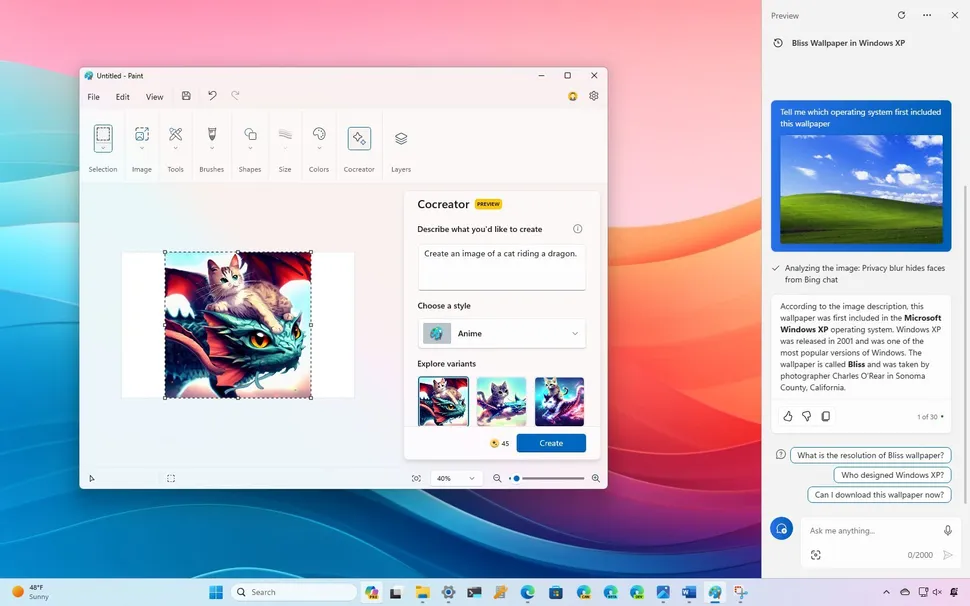Meta hires OpenAI researchers names – Meta’s Aggressive AI Hiring Strategy: Reshaping the AI Talent Landscape

Estimated reading time: 8 minutes
Key Takeaways
- Meta’s aggressive AI hiring strategy is profoundly reshaping the AI talent landscape, escalating the “AI arms race” among tech giants.
- Mark Zuckerberg’s ambition to position Meta at the forefront of AGI development is driving significant investments in human capital and infrastructure.
- A notable trend of high-profile OpenAI researchers leaving for Meta, including Trapit Bansal, signifies a major talent drain.
- The impact of Meta poaching AI talent includes a “brain drain” for OpenAI, accelerated AGI progress for Meta, and an industry-wide “salary war.”
- The intense competition for top AI talent 2025 and beyond highlights the increasing demand for elite AI experts and influences future AI innovation.
Table of contents
- Meta’s Aggressive AI Hiring Strategy: Reshaping the AI Talent Landscape
- Key Takeaways
- 1. Introduction: Meta’s Aggressive AI Hiring Strategy: Reshaping the AI Talent Landscape
- 2. Mark Zuckerberg’s Ambitious Vision: Building an AI Superintelligence Team
- 3. The AI Talent Drain: Notable OpenAI Researchers Leaving for Meta
- 4. The Far-Reaching Ripple Effect: The Impact of Meta Poaching AI Talent
- 5. The Intensifying Global Competition for Top AI Talent in 2025 and Beyond
- 6. Future Outlook: What This Talent Shift Means for AI Development
- 7. Conclusion: Meta’s AI Gambit: Reshaping the Landscape and the Ongoing Talent War
- Frequently Asked Questions
1. Introduction: Meta’s Aggressive AI Hiring Strategy: Reshaping the AI Talent Landscape
In the fiercely competitive realm of artificial intelligence, a palpable “AI arms race” has taken hold, with tech giants locked in an intense struggle to amass the brightest minds and most formidable resources. This strategic imperative is not merely about staying relevant; it’s about driving breakthrough innovation and securing a definitive leadership position in the burgeoning AI domain. The stakes are incredibly high, as the future of technology and even societal progress hinges on advancements in this transformative field. Amidst this escalating global competition, a significant development has emerged: Meta’s aggressive AI hiring strategy has positioned itself as a major disruptor, injecting a new dynamic into an already volatile landscape. This strategy isn’t just about incremental growth; it involves substantial, often unprecedented, investments in human capital and the underlying infrastructure necessary to support cutting-edge AI research and development. It signals a clear intent to dominate rather than merely participate in the AI revolution. For a broader understanding of how AI is fundamentally changing the world, you can explore insights from Penbrief.

Perhaps the most striking recent trend illustrating the intensity of this competition is the noticeable exodus of top OpenAI researchers leaving for Meta. This movement is not just a trickle; it’s a significant shift that is fueling widespread speculation across the industry and actively reshaping the contours of AI innovation. Such talent migration underscores the allure and gravity of Meta’s bold approach. As one source aptly puts it, “The race to dominate artificial intelligence has intensified, with tech giants vying for supremacy by amassing world-class talent and resources. Amid this escalating competition, Meta has emerged as a major disruptor with an aggressive AI hiring strategy. Recent months have seen a striking trend: top researchers from OpenAI are leaving to join Meta, fueling speculation and reshaping the landscape of AI innovation.” This critical insight, drawn from reports by Ainvest, Digitrendz, and Opentools.ai, paints a vivid picture of the current dynamic. This blog post will delve deeper into this phenomenon, exploring Mark Zuckerberg’s ambitious vision for AI, specific examples of talent poached from OpenAI, the significant ripple impact of Meta poaching AI talent on both OpenAI and the broader industry, and the intensifying global competition for top AI talent 2025 and beyond.
2. Mark Zuckerberg’s Ambitious Vision: Building an AI Superintelligence Team
Mark Zuckerberg, the visionary behind Meta, has explicitly articulated an ambitious goal: to position Meta not just as a participant, but as a definitive leader at the forefront of artificial general intelligence (AGI) development. This forward-looking vision is not a mere aspiration; it serves as the direct and potent underpinning for Meta’s aggressive AI hiring strategy. It’s a strategic pivot that demands unparalleled investment in both human capital and foundational infrastructure, signaling a long-term commitment to reshaping the technological landscape.
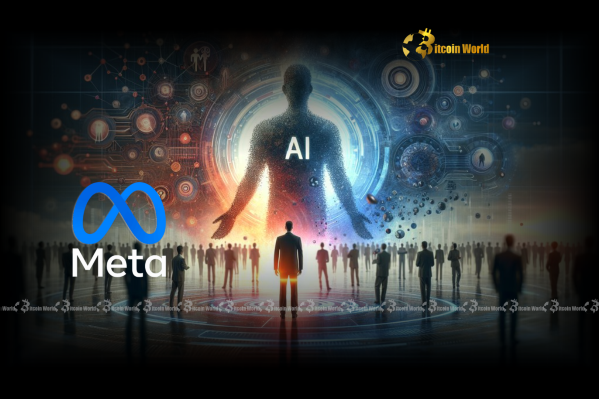
The strategic importance of this vision is vividly evident in Meta’s expansive Zuckerberg AI superintelligence team recruitment drive and its willingness to invest billions in the foundational infrastructure required for advanced AI. This includes, but is by no means limited to, the construction of massive data centers meticulously designed to handle the immense computational requirements inherent in developing sophisticated AI models. As highlighted by Ainvest, “This vision is evident in Meta’s recruitment drive and its willingness to invest billions in infrastructure, such as a 1.3-million-GPU data center in New Mexico, and the acquisition of AI startups, most notably Scale AI for $14.3 billion.” This monumental investment in computational power and strategic acquisitions, such as that noted in Penbrief’s analysis of Meta’s investment in Scale AI, underscores the serious nature of Meta’s pursuit of AGI.
Central to Meta’s ambitious plan is the assembly of a powerhouse team—a collection of the brightest minds in AI research and development. The ultimate objective for this elite group is to develop advanced reasoning models that can not only rival but also surpass the groundbreaking achievements already established by industry leaders such as OpenAI. Moreover, Meta is aiming to outpace formidable rising competitors like DeepSeek. The goal is to build AI that demonstrates truly sophisticated cognitive capabilities, moving beyond mere pattern recognition to genuine understanding and problem-solving. This strategic focus is designed to ensure Meta’s longevity and leadership in the rapidly evolving AI landscape. The ambition to create something revolutionary, akin to what is discussed in articles about Llama 4’s multimodal capabilities or Google DeepMind’s advancements mentioned on Penbrief, is at the core of Zuckerberg’s drive. Ainvest corroborates this, stating, “Central to Meta’s plan is assembling a powerhouse team capable of developing advanced reasoning models that can rival or surpass the breakthroughs achieved by OpenAI and competitors like DeepSeek.”
Further emphasizing the gravity and strategic importance of this initiative is Mark Zuckerberg’s direct, personal involvement in the recruitment push. He isn’t merely delegating; he’s actively engaging, including undertaking personal outreach to highly coveted talent within the AI community. This hands-on approach underscores the immense strategic importance he places on securing elite AI experts for his audacious vision. It’s a testament to how crucial he views top-tier talent in realizing Meta’s AGI ambitions. As noted by Mondo, “Zuckerberg’s direct involvement, including personal outreach to coveted talent, underscores the strategic importance he places on recruiting elite AI experts.” This level of personal commitment from the CEO is a powerful signal to the industry and potential recruits alike.
3. The AI Talent Drain: Notable OpenAI Researchers Leaving for Meta
A specific and highly significant trend currently reshaping the AI landscape is the consistent departure of OpenAI researchers leaving for Meta. This phenomenon is not coincidental; it is a direct and impactful consequence of Meta’s aggressive AI hiring strategy, which strategically targets top-tier talent from its most formidable competitors. The systematic recruitment of these experts represents a bold move designed to accelerate Meta’s own AI capabilities at the expense of its rivals.
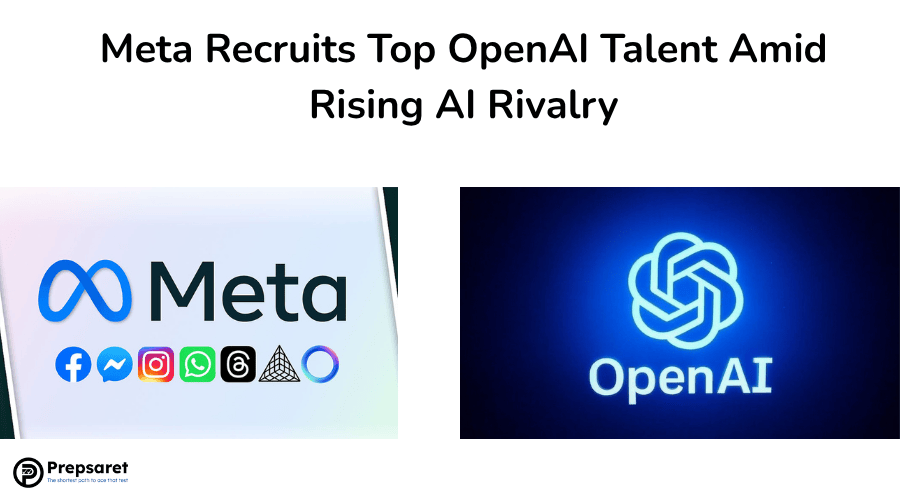
The caliber of Meta hires OpenAI researchers names speaks volumes about Meta’s intentions and the perceived value of the talent being recruited. Among the most notable names is Trapit Bansal, a core developer instrumental in the creation of OpenAI’s very first reasoning model. His move to Meta was reportedly secured with an astonishing compensation package valued at $100 million. This figure alone highlights the premium Meta is willing to pay to acquire foundational expertise. As detailed by Ainvest and Digitrendz, “Meta’s hiring spree has specifically targeted high-profile OpenAI researchers. Notable names include Trapit Bansal, a core developer of OpenAI’s first reasoning model, who reportedly accepted a compensation package valued at $100 million.”

Bansal’s transition was quickly followed by other key OpenAI Zurich researchers, including Lucas Beyer, Alexander Kolesnikov, and Xiaohua Zhai, further cementing the significant shift of expertise. The influx of talent extends beyond OpenAI, also encompassing highly respected figures like Jack Rae, formerly of Google DeepMind, and Alexandr Wang, the CEO of Scale AI, an entity Meta has also invested heavily in. These additional hires, reported by Ainvest, underscore the comprehensive nature of Meta’s talent acquisition strategy, aiming to consolidate top-tier AI expertise from across the industry. The sheer high caliber and extensive experience of these specific hires serve as a clear and unmistakable signal of Meta’s profound commitment to rapidly advancing its own ambitious AGI initiatives and significantly strengthening its overall research capabilities. This is not just about filling positions; it’s about acquiring strategic intellectual capital.
The multifaceted factors motivating these top researchers to transition from OpenAI to Meta are complex, extending beyond mere financial incentives. While highly competitive compensation packages are undoubtedly a significant draw, a deeper analysis reveals a confluence of appealing conditions at Meta. Researchers are increasingly drawn to Meta’s vast resources and formidable infrastructure, which offer unparalleled opportunities for impactful work. This includes access to significant computing power, crucial for running complex AI experiments and training large models. The sheer scale of Meta’s computational resources, like those hinted at in discussions about OpenAI’s defense contracts and associated infrastructure, is a major differentiator. Furthermore, the promise of engaging in cutting-edge projects with greater autonomy, allowing top minds the freedom to innovate without excessive bureaucratic hurdles, is a powerful motivator. The potential for outsized impact within a company that is actively seeking to redefine the boundaries of AI, alongside extensive data access for training robust models, creates an irresistible proposition for those at the pinnacle of the field. Ainvest and Mondo collectively summarize these motivations: “Researchers may be motivated by several factors: Meta’s vast resources and infrastructure, the promise of working on cutting-edge projects with greater autonomy, highly competitive compensation, and the potential for outsized impact within a company seeking to redefine the boundaries of AI.”
4. The Far-Reaching Ripple Effect: The Impact of Meta Poaching AI Talent
Meta’s aggressive AI hiring strategy, characterized by its focused poaching of elite talent from competitors like OpenAI, is not merely a localized event; it is creating significant and widespread ripples across the entire tech industry. This strategic maneuvering is fundamentally altering the competitive dynamics, forcing every major player to re-evaluate their talent acquisition and retention strategies. As observed by Mondo, “Meta’s poaching strategy is creating significant ripples across the tech industry,” a sentiment echoed in discussions about Meta’s broader investment and its impact on the AI industry.
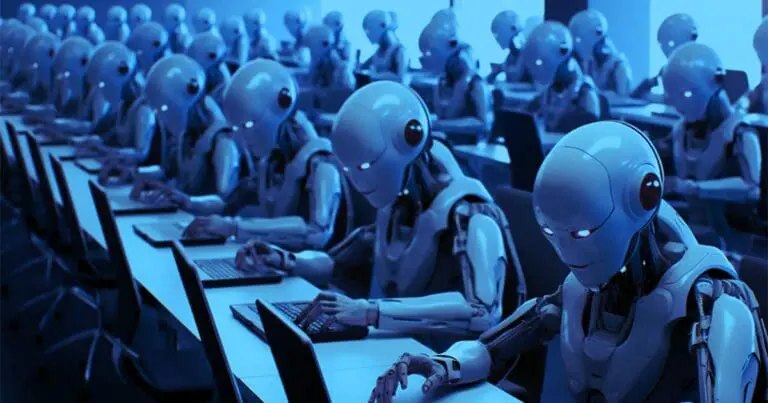
The direct and indirect consequences for OpenAI are considerable. The most immediate concern is the risk of “brain drain,” where crucial expertise and institutional knowledge are lost with the departure of key researchers. This can potentially lead to stalled or significantly delayed projects, impacting OpenAI’s ability to maintain its competitive edge and deliver on its innovation pipeline. Consequently, OpenAI is compelled to urgently focus on internal talent retention strategies, implementing measures to keep its remaining top minds engaged and motivated. Simultaneously, it must embark on aggressive future hiring drives to backfill critical roles and ensure the continuity of its ambitious research initiatives. The pressure is immense to not only replace the departed but also to cultivate new leaders from within to secure its long-term future in the rapidly evolving AI space.
Conversely, Meta stands to gain considerable benefits from this strategic influx of top-tier talent. The arrival of these accomplished researchers directly accelerates Meta’s progress toward developing AGI, significantly boosting its overall research and development capabilities. This rapid enhancement of its R&D muscle enables Meta to pursue more ambitious projects and innovate at an accelerated pace, giving it a distinct advantage. Furthermore, this talent infusion enhances Meta’s competitive positioning in the rapidly evolving market for AI-driven products and services. With stronger teams and advanced research, Meta is better equipped to introduce groundbreaking AI applications that can redefine user experiences and market expectations. Ainvest and Mondo both affirm this, stating, “The arrival of top-tier talent accelerates Meta’s progress toward developing AGI, boosts its research and development capabilities, and enhances its competitive positioning in AI-driven products and services.”
Beyond the immediate impact on OpenAI and Meta, the wider implications for the broader industry are profound, reinforcing the substantial impact of Meta poaching AI talent. This aggressive approach to talent acquisition is sparking an intense “salary war,” driving up compensation packages, resource allocation, and workplace perks for AI researchers across the board. Companies, eager to attract and retain the best, are forced into bidding wars, pushing financial incentives to unprecedented levels. This dynamic means that other companies are now under immense pressure to fundamentally rethink their own recruitment and retention tactics to avoid losing critical AI talent. It’s not just about competitive salaries; it’s about offering cutting-edge projects, superior working environments, and genuine opportunities for impact. The shifts in the industry are profound, mirroring the broader changes in business practices discussed in guides like “How AI is Transforming Businesses.” As succinctly put by Mondo, “This aggressive approach to talent acquisition is sparking a ‘salary war,’ pushing compensation, resources, and workplace perks higher for AI researchers. Other companies are now pressured to rethink their own recruitment and retention tactics to avoid losing critical talent.” This ripple effect ensures that the entire AI talent market remains highly fluid and intensely competitive.
5. The Intensifying Global Competition for Top AI Talent in 2025 and Beyond
Stepping back from the specific dynamics between OpenAI and Meta, it’s crucial to broaden the discussion to the overall, intensifying global competition for top AI talent 2025 and stretching into the years beyond. Meta’s actions, while significant, are ultimately symptomatic of a much larger, global trend. This heightened demand for elite AI expertise is a defining characteristic of the current technological era. As noted, “Meta’s hiring blitz is emblematic of a broader, intensifying global competition for elite AI talent through 2025 and beyond.” Every major tech player, from established giants to nimble startups, and even leading academic institutions, are vying for the same finite pool of exceptionally skilled individuals.
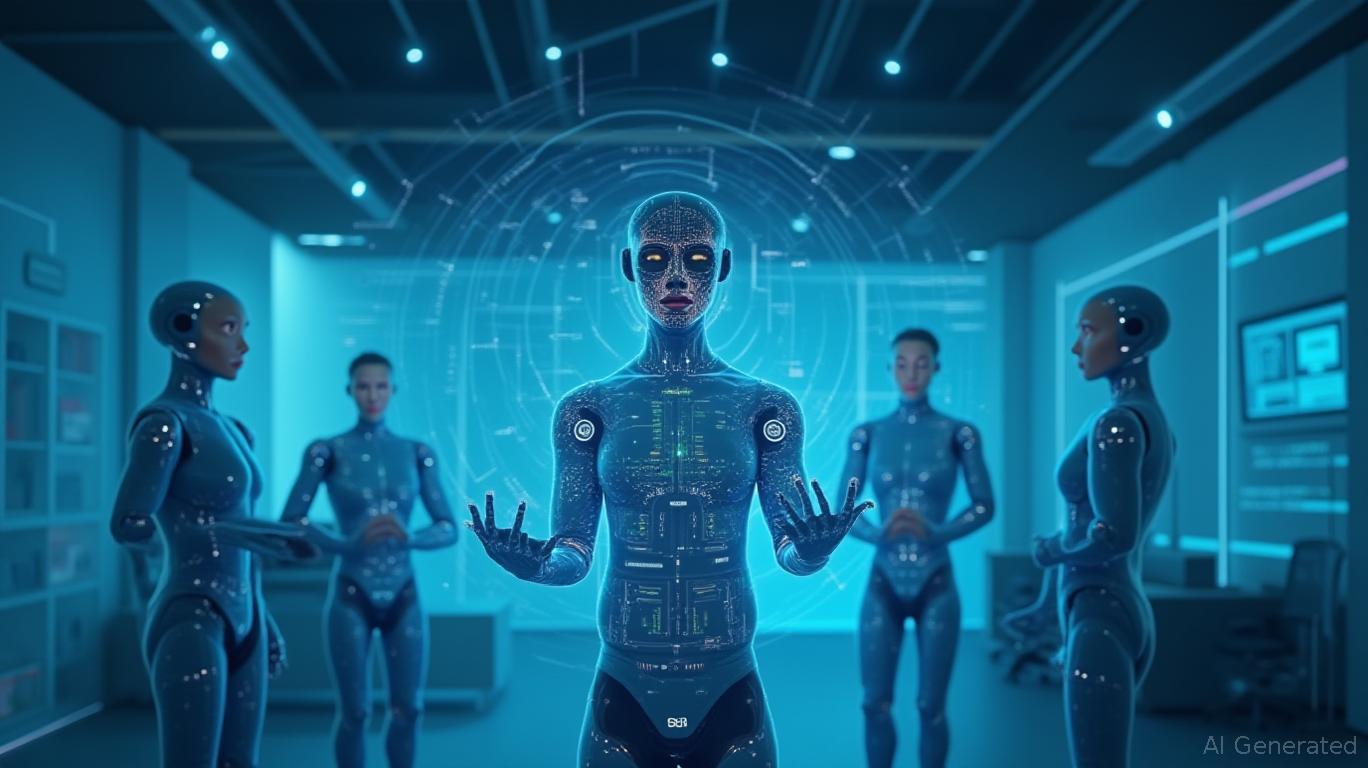
In this escalating talent war, Meta’s aggressive AI hiring strategy stands out as a significant factor, not just reflecting but actively contributing to and intensifying this global talent scramble. Its bold, often high-stakes, moves compel other industry players to react in kind, fostering an environment of continuous escalation. This aggressive strategy forces other tech giants, burgeoning startups, and even prestigious academic institutions to escalate their own efforts to secure and, critically, retain experts. The demand spans a wide array of specialized areas within AI, ranging from core machine learning principles and the intricate development of large language models to advanced robotics and complex agent-based systems. As Mondo and Opentools.ai elaborate, “Its aggressive strategy is forcing other tech giants, startups, and academic institutions to escalate their own efforts to secure and retain experts in areas ranging from machine learning and large language models to robotics and agent-based systems.” The pressure is on for everyone to step up their game.
To attract and retain elite AI talent in this hyper-competitive environment, companies are now focusing on several critical trends and incentives:
- Access to cutting-edge research and massive compute power: Top researchers are driven by the opportunity to push the boundaries of AI. Providing them with unparalleled access to vast computational resources and groundbreaking research projects is paramount. This allows them to pursue ambitious, resource-intensive projects that might be impossible elsewhere, directly translating theoretical concepts into tangible breakthroughs.
- Flexible environments offering greater project autonomy: The most brilliant minds often thrive in environments that grant them significant freedom. Offering flexible working arrangements and greater autonomy over their projects empowers researchers to innovate and explore new avenues without undue bureaucratic constraints. This trust fosters creativity and encourages daring experimentation, which is vital for true innovation.
- Highly competitive, often multimillion-dollar, compensation packages: While not the sole motivator, financial incentives remain a critical factor in this high-demand field. Companies are increasingly offering compensation packages that reflect the scarcity and immense value of top AI talent, often stretching into the millions of dollars. This financial magnetism ensures that the best talent is attracted and retained in a market where bidding wars are common.
- Strong company cultures and visionary leadership: Beyond money and resources, an inspiring work environment is key. Companies that foster a culture of innovation, collaboration, and continuous learning, coupled with clear and visionary leadership, are highly attractive. Talented individuals want to be part of something meaningful, guided by leaders who understand and champion the future of AI.

These strategies are directly influenced by the “salary wars” and intensified competition driven by Meta’s hiring blitz, as further supported by Mondo’s analysis. The market has fundamentally shifted, and only those companies willing to adapt aggressively will succeed in securing the talent necessary for future AI leadership.
6. Future Outlook: What This Talent Shift Means for AI Development
The significant talent shift currently underway, largely catalyzed and driven by Meta’s aggressive AI hiring strategy, is poised to profoundly influence the future direction of AI research and product innovation across the entire industry. This redistribution of expertise isn’t just about corporate rivalries; it’s about altering the very trajectory of artificial intelligence itself, guiding where breakthroughs occur and which applications see the light of day first. The concentration of certain types of talent within particular organizations will inevitably lead to specialized advancements, potentially creating new centers of excellence for different AI disciplines.
At Meta, there is a strong potential for accelerated progress in specific, critical areas. The influx of top-tier talent, particularly those experienced in foundational models and complex cognitive architectures, directly enhances Meta’s capacity for innovation. This is especially true in the development of advanced reasoning models, which are crucial for creating AI that can understand, infer, and generate sophisticated responses beyond pattern matching. Furthermore, the push towards more capable autonomous agents—AI systems that can operate independently and perform complex tasks—is likely to see rapid acceleration. As Ainvest suggests, “The migration of top talent from OpenAI to Meta could accelerate AI innovation at Meta, potentially enabling breakthroughs in reasoning models and autonomous agents.” This means Meta could be at the forefront of the next generation of AI capabilities.
Conversely, OpenAI and similar organizations face significant challenges. They will need to adapt rapidly, not only to fill the expertise gaps left by departing researchers but also, crucially, to cultivate new leaders internally. This involves nurturing rising stars, investing heavily in professional development, and creating an environment where new talent can quickly grow into positions of influence. The loss of experienced innovators can create voids in ongoing projects and strategic planning, necessitating swift and decisive action to maintain momentum. The ability to foster a new generation of internal leaders will be paramount to ensuring continuity, sustaining a robust research pipeline, and preserving their competitive standing in the long term. It becomes a test of organizational resilience and adaptability.
The industry-wide implications of the intensifying competition for top AI talent 2025 are multifaceted. While this talent arms race could indeed drive faster technological progress, as companies pour resources into attracting and empowering elite researchers, it also carries potential risks. The intense focus on securing talent at any cost might magnify ethical, social, and regulatory concerns regarding AI deployment and its broader consequences for society. A rapid, unbridled pursuit of advanced AI, driven by competitive pressures, could potentially overlook critical considerations around fairness, bias, safety, and accountability. As discussed in guides on understanding new AI regulations, governments and regulatory bodies are already grappling with these complex issues. Ultimately, “Industry-wide, this talent arms race could drive faster progress but also magnify ethical, social, and regulatory concerns regarding AI deployment and its consequences for society.” The balance between innovation and responsible development will become increasingly precarious as the talent war escalates.
7. Conclusion: Meta’s AI Gambit: Reshaping the Landscape and the Ongoing Talent War
The profound role of Meta’s aggressive AI hiring strategy in fundamentally reshaping the dynamics of the current global AI landscape cannot be overstated. It represents a bold, calculated gamble designed to reposition the tech giant at the very apex of artificial intelligence innovation. The strategic acquisition of elite expertise is not merely about incremental gains; it is about fundamentally altering the competitive equilibrium and setting new benchmarks for progress.
To summarize the key takeaways from this analysis, several critical points emerge:
- The striking trend of OpenAI researchers leaving for Meta has directly strengthened Meta’s own AI capabilities, injecting vital expertise and accelerating its projects, particularly in the pursuit of Artificial General Intelligence.
- The significant impact of Meta poaching AI talent has set off wide-ranging chain reactions across the entire tech world. This includes intensifying a “salary war” for AI professionals and compelling other companies to drastically rethink their recruitment and retention strategies. The game has changed, fundamentally redefining what it takes to compete at the cutting edge of AI in 2025.
- The ongoing competition for top AI talent 2025 and beyond is not a fleeting phenomenon but a defining characteristic of the current AI era. It is a fierce, relentless struggle for the limited pool of elite expertise, and it is likely to intensify further as AI’s importance grows across all industries.
As noted by Ainvest, Mondo, and Digitrendz, “Meta’s aggressive AI hiring strategy has recast the dynamics of the global AI landscape. Poaching top talent, particularly from OpenAI, has not only strengthened Meta’s own capabilities but has set off chain reactions across the tech world, redefining what it takes to compete at the cutting edge of AI in 2025.” This succinctly captures the transformative effect of Meta’s bold moves.
Ultimately, the highly dynamic and intensely competitive nature of the AI talent market will continue to define the technological landscape for years to come. This ongoing struggle for elite expertise will have far-reaching implications for future innovation, driving the pace and direction of AI advancements. It will inevitably influence compensation structures across the industry, setting new standards for salaries and benefits for top-tier researchers. Crucially, it will also shape the ethical development and deployment of artificial intelligence, as companies strive for both technological supremacy and responsible innovation in the years to come. The talent war is not just a battle for people; it’s a battle for the future of AI itself.
Frequently Asked Questions
- Q: Why is Meta aggressively hiring AI talent?A: Meta’s aggressive hiring is driven by Mark Zuckerberg’s ambitious vision to position the company at the forefront of Artificial General Intelligence (AGI) development. They aim to build a powerhouse team capable of creating advanced reasoning models and strengthening their overall AI research capabilities.
- Q: Which notable researchers have left OpenAI for Meta?A: High-profile researchers who have moved include Trapit Bansal, a core developer of OpenAI’s first reasoning model, as well as Lucas Beyer, Alexander Kolesnikov, and Xiaohua Zhai from OpenAI Zurich. Other notable hires include Jack Rae from Google DeepMind and Alexandr Wang, CEO of Scale AI.
- Q: What is the impact of Meta poaching AI talent on OpenAI?A: The talent drain poses significant challenges for OpenAI, including a “brain drain” of crucial expertise, potential delays in projects, and the urgent need to double down on internal talent retention and aggressive new hiring strategies to fill key roles and cultivate new leaders.
- Q: How does Meta’s strategy affect the broader AI industry?A: Meta’s aggressive approach is sparking an intense “salary war,” driving up compensation packages and perks for AI researchers across the board. This forces other companies to rethink their own recruitment and retention tactics to avoid losing critical AI talent, escalating the global competition.
- Q: What does the intensifying competition for AI talent mean for future AI development?A: While the talent arms race could accelerate technological progress, it also magnifies ethical, social, and regulatory concerns regarding AI deployment. It highlights the importance of offering not just competitive compensation but also cutting-edge research opportunities, autonomy, and strong company culture to attract and retain top AI minds.


